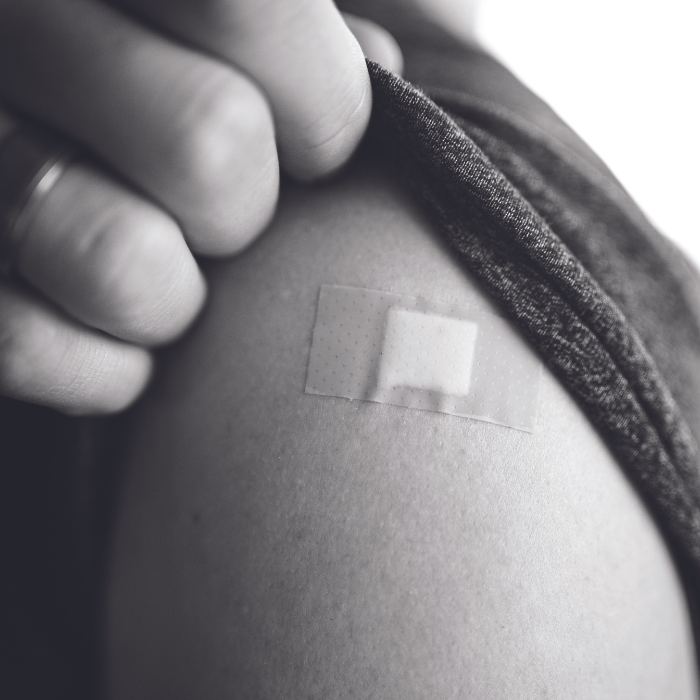
Sneezing, scratching, and suffering your way through hay fever season? Tiffany Brown explains what’s going on (and what might help).
Days lengthen, lambs play, seedlings emerge, blossoms bloom, warmer breezes blow… The spring season brings welcome energy following the bareness of winter. But for those of us affected by seasonal allergies, spring can spell its own onset of dread and gloom. Just as winter tends to bring colds and flu as we shut ourselves up and spend more time in circulating air, spring’s environmental changes can challenge a weaker immune system as it emerges from a winter indoors. Those with a history of springtime reactivity steel themselves for their most difficult time of the year.
WHAT’S GOING ON?
So, why do allergies flare in spring? For a start, trees and grasses start to release pollen into the air, causing the immune system to overreact to an otherwise harmless substance known as an allergen. In response to allergens, the sufferer produces antibodies which are responsible for releasing histamine, in turn causing swelling in the nose and eyes; ironically, a protective mechanism to stop allergens from getting into the body. Sneezing can also develop in a further attempt to protect the body and remove the offending allergens. Rains and winds can increase during spring, leaving an abundance of pollen in the air, and as the temperature rises, mould can also proliferate and act as a similar trigger. General symptoms of spring allergy include swollen, itchy, watery eyes, nasal congestion, sneezing, wheezing, coughing, and runny noses. The sum total of this reaction is commonly known as hay fever, or allergic rhinitis.
ATOPIC DERMATITIS
Often an unfortunate companion of the dreaded hay fever is eczema. Affecting around one in three Kiwis, there are seven types of eczema in total. The most common is atopic dermatitis. This type of eczema tends to start in childhood, and kids who get it often also suffer asthma and hay fever, making a common – and miserable – triad to deal with in the younger years.
The symptoms of atopic dermatitis include an itchy rash in the creases of the elbows and knees where the skin may turn lighter, darker, and/or get thicker, accompanied by small bumps which can leak fluid if scratched, leading to potential secondary skin infection. Babies may develop rashes on their scalp or cheeks.
ECZEMA COMMONLY CO-OCCURS WITH ASTHMA AND HAY FEVER, AND 20% OF PEOPLE DEVELOP ECZEMA BEFORE THE AGE OF FIVE.
While the skin can become infected through scratching, eczema is not in itself infectious, but the inflammatory skin condition tends to recur. Often characterised by bouts of flaring and subsiding, no one has been able to determine an exact cause for the condition. Most childhood sufferers find they no longer experience eczema beyond their sixth birthday.
Some, however, will deal with it for a lifetime, with a family history of eczema, asthma, or hay fever being the most likely predictor for parents passing the condition on to their children. A variety of irritants can trigger the condition, including stress, certain foods, environmental toxins, household cleaners, perfumes, soaps, weather conditions, and, of course, pollens, grasses, and mould.
HOW TO HELP
Traditional treatment methods for eczema attempt to heal the skin, while preventing and lessening eczema flare-ups. Topical corticosteroids were developed in the 1950s, promising significant relief to eczema sufferers. A doctor may prescribe varying concentrations of the medication to stop itch and inflammation. There are some very mild-strength formulas available over the counter, but the stronger formulations are prescription-only. The stronger the corticosteroid, the higher the risk of rare but painful side effects, such as topical steroid withdrawal.
Doctors may also use sedating antihistamines to induce sleep and reduce itching, wet bandaging to soothe and heal lesions, allergy testing to screen for trigger reactions, or antibiotics to treat secondary infections as part of their eczema management plan. Eczema research is uncovering overlooked connections between our microbiome, the skin barrier, the environment, and our immune system. Reduced microbial diversity has been found in those who suffer eczema; that means eczema sufferers were found to have fewer different kinds of bacteria on the skin and in the gut than non-sufferers, so improving gut health may help improve allergy symptoms too.
A LITTLE TLC
What other natural ways can we handle the sneezy season? One allergy sufferer we canvassed says, “We try to identify what triggers the allergies and remove them but it’s not always possible. Lots of cuddles for the little kids is nice.”
Another lifelong sufferer had tried an array of both medicated and natural alternatives, and had worked extensively with a naturopath and staff at a local health store for support. “The over-the-counter medications worked for a while, but I had to keep changing formulations as my body got used to them. I start supplementing reishi [a medicinal mushroom which supports immunity] into my morning cuppa about a month before my symptoms usually start and keep going through my hay fever season.”








